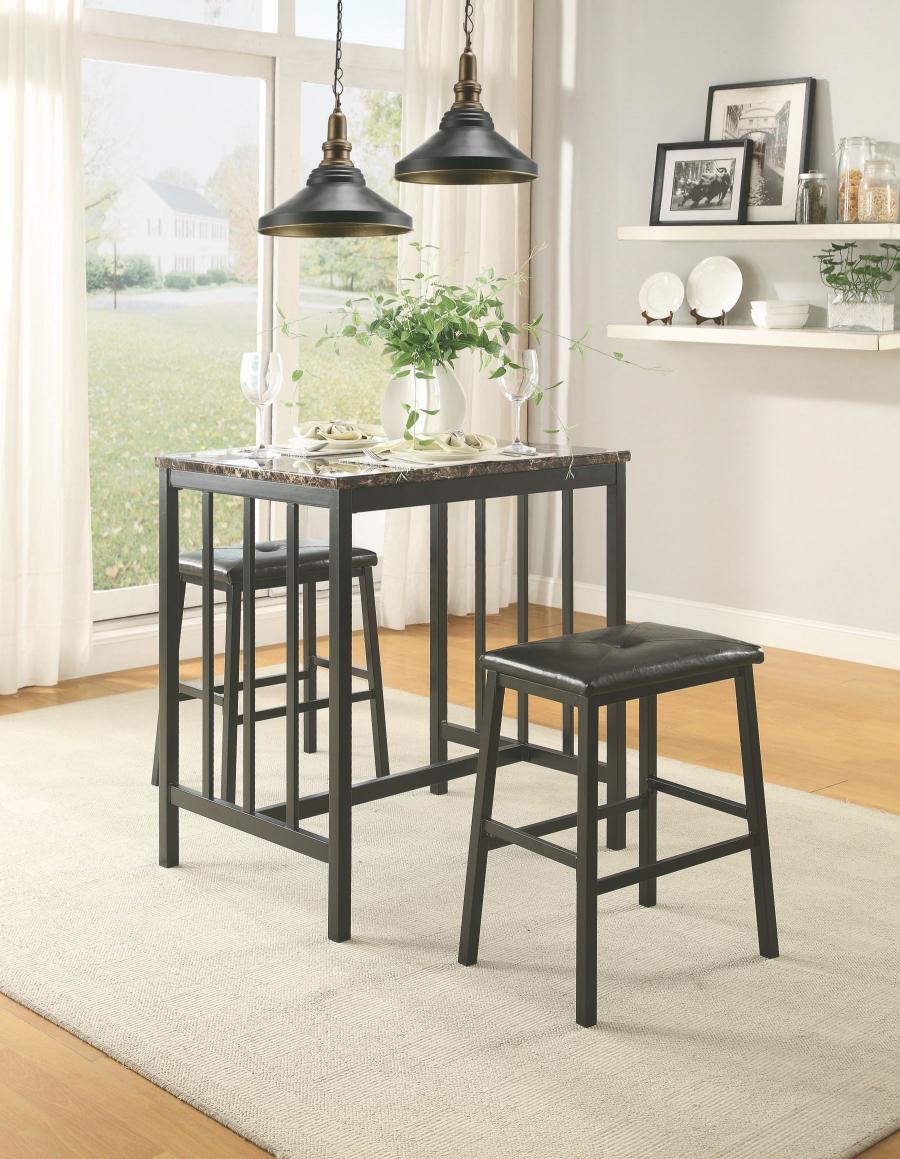
If you've ever attempted to move heavy furniture with family and friends, you already understand how challenging it can be. So, imagining yourself lifting furniture all by yourself can seem impossible. Unfortunately, life happens, and sometimes, you'll have no choice but to move heavy objects alone. What do you do in such situations?
The good news is that you cannot only move furniture without help from any professional, but you can also do it safely and easily. You have to learn the important tricks, and you're good to go. This article provides a comprehensive guide on moving heavy furniture by yourself in the safest ways possible. However, we advise you to enlist a friend's assistance for specific moving tasks, such as climbing stairs or heavy lifting.
Are you ready to learn the nitty-gritty of moving heavy items without assistance? Let's get started.
Tip 1: Have a Plan
Like with every other major project you embark on, moving heavy furniture by yourself requires a solid plan. Properly and thoroughly planning the essential details of your move eliminates confusion and guarantees efficiency. It also helps you to save time and ensures a smooth offloading process later on.
So, how do you plan your move? You can start by identifying the heavy items that need to be in the moving truck as well as where and when they must be loaded. A good rule of thumb is to put the heaviest pieces of furniture behind and beside the truck bed to ensure load balance and safety. As such, you'll have to begin with the heavy lifting and then fill the remaining spaces with the lighter items.
Other things to consider when planning your move include routes, tight space measurements, and unloading. You may also want to plan how to arrange your items in your new home before offloading and packing your furniture.
Tip 2: Make Preparations for the Move
After mapping out your concrete plans, the next step is to prepare for your move. By preparation, we mean breaking down your furniture into the smallest parts possible. So, remove all detachable pieces like knobs, drawers, cushions, etc. If your bed frames, sectionals, table, and catch legs are removable, take them off too. This ensures that you can easily move them through narrow spaces and lessen their weight.
Another way to prepare for your move includes ensuring that you store the detached pieces properly. Small pieces like nuts, bolts, and screws should be stored and labeled in suitable baggies. This ensures that nothing gets missing and you know what's what at a glance.
Furniture should also be wrapped with plastic wrap. The wrap minimizes scratching and keeps the components together.
Also, make sure pathways are clear of obstructions that may cause trips and falls during the move.
Tip 3: Dress Appropriately
Many people focus on heavy items when moving furniture and neglect their clothes. That's one mistake you should never make. While the occasion doesn't call for you to look your fashionable best, choosing comfortable dresses you can move freely in is important. Otherwise, if you want to move heavy furniture like a pro, you must dress the part.
Now, let's discuss your choice of shoes. There's no way you'll be able to move heavy furniture conveniently wearing a stiletto or high heels. Flip-flops are also a terrible choice.
The best footwear for this type of job is shoes that cover your toes completely to minimize injury risk if something falls on them. So, get your boots and athletic shoes ready already. Also, ensure that your shoe's bottom is non-slip.
When it comes to your clothing, choose breathable, light, and loose dresses. Besides making you comfortable, choose the right clothes to ensure you don't rip your prized attires as you move.
Tip 4: Get Your Moving Tools Ready
Moving furniture alone doesn't mean you have to do it without equipment. In fact, this is the time to gather as much useful equipment as possible. The right moving tools will reduce your risk of back aches and ensure that heavy liftings are not so heavy.
So, what equipment should you get ready for the big move? You'll find the essential ones below:
Furniture Sliders
Furniture sliders are plastic materials that you can place at the bottom of your couches, bed frames, and other heavy equipment that you must move across hard floors and tiles. This moving tool helps to protect your tiles, carpeting, or hardwood from scrapes and other damages as the furniture glides across them. Furniture sliders also make it easier to move hard furniture by reducing friction.
Hand Trucks
Hand trucks, also called furniture dollies, are two-wheeled carts in the shape of an L that you can use to lift and move larger objects. However, you can also find square hand trucks with 4 wheels and flat platforms.
Furniture dollies make it simple to move bulky furniture without expending too much energy. All you have to do is place your heavy items on the truck's platform, then move them wherever you wish with the handles.
Ratchet Straps
Ratchet straps are a form of load restraint equipment that you can use to secure your items for transport. They are sometimes referred to as ratchet lashings, moving straps, or tie-downs and ensure that your load stays in place as you drive. Moving straps can also help in weight distribution, easing the pressure on your legs and back when moving heavy stuff.
Ramps
Don't try to lift large furniture upstairs or into moving vehicles with your strength. With ramps, placing a heavy or awkward item on an elevated surface is considerably simpler and safer.
Work Gloves
Gloves protect not just you but also your furniture. If any of your furniture has sharp or jagged edges, these gloves will reduce your risk of injuries. Additionally, they can prevent your hands from contaminating your possessions with oil or dirt.
Tip 5: Ensure That You're Fit Enough to Lift Heavy Items
Moving heavy furniture is like running a marathon or weight-lifting; you should only do so after a good stretch. Otherwise, you'll increase your risk of a sprain or strain, especially in your back region. So, exercise your muscles beforehand to help prevent injury by doing side, back, leg, and arm stretches.
If your muscles are tired or sore at the end of the day, ensure that you stretch once more and get lots of rest. You may also want to take a warm bath or use heating pads if your muscles become sore.
Tip 6: Observe Safe Lifting Procedures
The next thing is to ensure that you apply safe lifting techniques to move heavy furniture. Though you undoubtedly already know that you should always lift with your legs, there are other moving techniques you should be aware of.
When lifting or carrying furniture, bend your knees and keep your torso straight. To help you maintain balance, keep the item as near your body as you can. Ensure your frontal vision is unobstructed above anything else.
Tip 7: Mind the Doorways and Stairs
There isn't always going to be a way to avoid moving large furniture up or downstairs, and this makes an already difficult task more challenging. So, you'll need to team up with a buddy to get this job done; don't try to do this by yourself.
Carry the object high and low, that is, from its top surface when you are higher up the steps and from its bottom surface when you are lower down. The person at the bottom should set the tempo as you move very slowly.
Tip 8: Create a Plan for Offloading
Your job is only fully done when you've properly unloaded and placed the last item in its new location. As such, you should have a plan for unloading and offloading, just like you did when moving out of your former home. By doing this, you spare yourself having to transfer heavy furniture into your home from a truck and back out again just because they weren't properly arranged the first time. However, you can save time by delaying assembling each piece of furniture until everything has been unloaded.
Final Thoughts
Have you had sleepless nights wondering how to move something heavy by yourself? Now, you can kiss sleep-deprivation goodbye. With the easy-to-execute tips above, moving furniture easily is your new forte.
Frequently Asked Questions
What is the easiest way to move heavy furniture?
The easiest way to move heavy furniture is by breaking them into smaller pieces. For example, you can take out removable couch legs, cushions, etc., to make heavy chairs easier to carry.
How do you move heavy furniture with one person?
Moving your furniture with one person can be done with the help of equipment. These include hand trucks, ramps, ratchet straps, furniture sliders, work gloves, etc.
How do you move heavy furniture without a slider?
There are many ways to move heavy furniture without sliders and prevent them from damaging your floors. For example, you can place them on a hand truck and move them without scraping your tiles.












































































